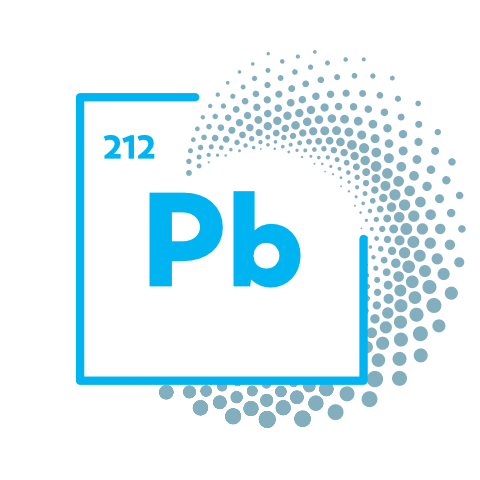Actinium-225 versus lead-212: the ratrace to the finishline
Actinium-225 versus lead-212: the ratrace to the finishline
30 November 2022
It is game on for actinium-225 and lead-212. These two alpha-emitters can treat the same cancer and they are center stage in several researches around the world. However, only one can be the winner and conquer the market. What are the differences between these two powerhouses and which one is more likely to take the prize. Dr. Mark Konijnenberg, researcher Radiology & Nuclear Medicine at the Erasmus Medical Center in Rotterdam, involved in an actinium-225 study himself, shares his thoughts on a potential victor in this arena.
Subscribe to our newsletter!

“We have the theoretical knowledge about both isotopes, but in the end it all comes down to experimenting and conducting clinical trials to determine the advantage of one isotope over the other”, Konijnenberg says. Konijnenberg is involved in a study to see if actinium-225 improves the efficacy of the therapy using lutetium-177-labeled PSMA-specific tracers for prostate cancer by replacing the β-emitting lutetium-177 with the α-emitting actinium-225. Actinium-225 is thought to have a higher therapeutic efficacy due to the high linear energy transfer (LET) of the emitted α-particles, which can increase the amount and complexity of the therapy-induced DNA double strand breaks (DSBs).This study is now in clinical phase 1.
Shorter half-life
Still, Konijnenberg believes that lead-212 might be a better alternative, due to the shorter half-life of lead. “It is a hypothesis, that I base on my experience with radiotherapy. In radiotherapy, they have discovered that giving many small doses of a radionuclide is less effective than giving a few large doses. In the latter case, the tumor shrunk more and the total dose was lower. I believe that using a radionuclide with a shorter half-life, leads to a higher dose rate and might be more effective”. The half-life of lead is 10,6 hours, compared to a half-life of actinium of 10 days.
The shorter half-life of lead does pose a challenge for the logistics and the transportation of this α-emitter. “The research phase is a hectic period in which combinations of different molecules and the isotope need to be tested. Having only 48 hours (within approximately 48 hours the lead-212 has fully decayed) to do this is not enough to conduct meaningful in vivo experiments”, Konijnenberg explains. “The thorium-lead generator, being developed at the moment, would be a great alternative, but radiation protection wise it still poses a challenge. We have a broad permit for allowed isotopes, but the thorium-228 generator would produce ten times the amount of radiotoxicity units allowed in the whole building. It means having a highly active and radiotoxic source in the center of Rotterdam. That is why there is a limit on the number of radionuclides you can have. We maybe need a special distribution center outside the hospital…”
One way or another, the first one to the finish line will conquer the market.
Larger ‘kick-back’ or recoil
But actinium-225 also has its own factors, which might cause this isotope to be less than ideal. The problem lies in the larger ‘recoil’ of actinium by its alpha-decay. Konijnenberg: “Actinium has four alpha particles and decays into francium-221, astatine-217, bismuth-213 and thallium-209. We know that the third daughter, bismuth, accumulates in the kidneys, when it breaks free of the molecule. Bismuth is also radioactive. It is an α-emitter. Chances are that when actinium decays into francium, the large recoil energy will cause the connection between the chelator and the molecule PSMA to break and the isotope to detach. The isotope will then be able to travel to the kidneys and cause great damage. Lead-212 only has one alpha particle and when that particle is released, ideally it is already within the tumor.” The phase 1 trial that Konijnenberg is involved in, focuses in a large part on this challenge. He is not convinced though, that this will be the major deal breaker.
And the winner is…
For now, actinium seems to have the upper hand. Where lead-212 is still in the preclinical phase, actinium-225 is in phase 1. And in several centers in Germany it is already used to treat patients on a small “compassionate use” scale. “There is anecdotal evidence that it benefits the patient greatly, even in patients that did not respond to Lu-PSMA therapy. But with actinium, most tumors nearly disappeared. So people are very excited about this radionuclide. But we are talking about only two or three patients here”, clarifies Konijnenberg.
However, if actinium proves to live up to the expectations, the current production capacity will not suffice. The demand will greatly exceed supply. And Konijnenberg believes, that is where lead-212 might win the race. “The production capacity of lead-212 is easier to scale up than it is for actinium. If it does turn out that actinium is going to be the radionuclide of choice, an inventive method needs to be found to increase the production capacity. One way or another, the first one to the finish line will conquer the market. The runner up will then need to prove how good it is.”

More information?
Do you wish to learn more on lead-212 and how FIELD-LAB can help you? Get in touch with us!
